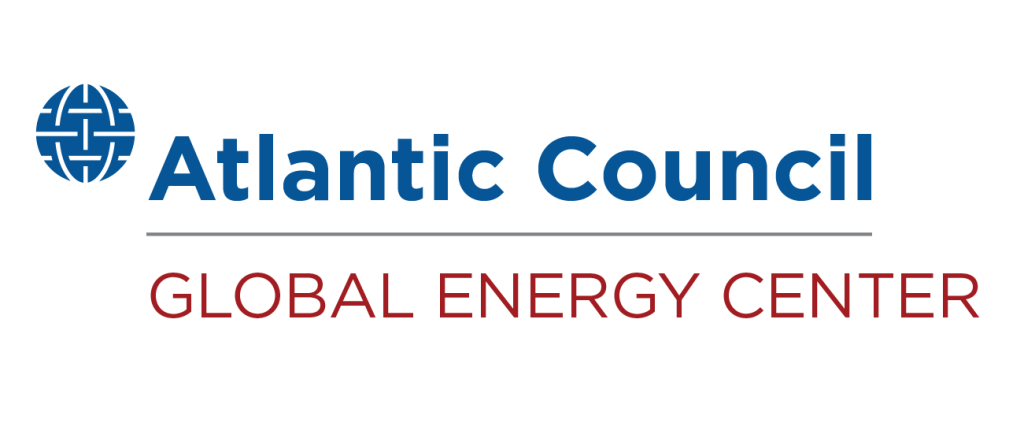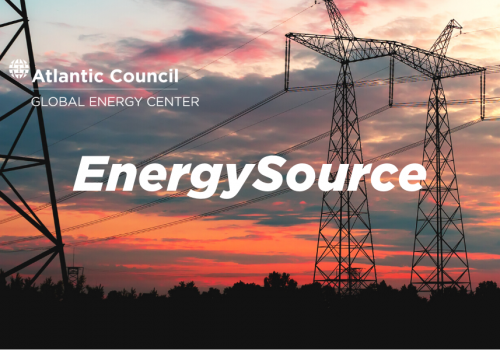Energy security is critical to US national security, economic resilience, and competitiveness. Despite this, the United States lacks a comprehensive, long-term energy strategy that aligns energy security with broader national interests beyond the US political cycle.
To address this, a “National Energy Strategy” (NES)—like the National Defense Strategy (NDS)—should be mandated through Congress, with regular reviews and bipartisan collaboration to ensure stability and adaptability to emerging challenges. The next administration could work closely with Congress to draft an NES that ensures efforts are enduring and aligned with long-term national interests. Subject to five-year reviews and Congressional oversight, this approach would maintain policy continuity and resilience across political cycles.
STAY CONNECTED
Sign up for PowerPlay, the Atlantic Council’s bimonthly newsletter keeping you up to date on all facets of the energy transition.
President-elect Donald Trump’s announcement of establishing a National Energy Council (NEC) at the White House underscores the critical need for a cohesive and long-term energy strategy. Trump proposed that the NEC would oversee the path to US energy dominance by enhancing private sector investments across all sectors of the economy, prioritizing innovation, and accelerating review and approval processes to increase energy production and delivery. This approach aligns with the broader need for a structured NES that not only drives economic growth and energy independence but also establishes a durable energy policy framework.
Creating a durable, de-politicized energy strategy
Establishing an NES under Congress elevates energy security as a national security priority. This can allow for a cohesive strategy resilient to short-term political fluctuations. Congressional oversight would align energy policies with long-term national interests, including economic growth, self-reliance, economic and energy sustainability, and global leadership. A structured NES should enhance domestic energy production, diversify supply chains, secure strategic reserves, and integrate sustainable practices. It must also prioritize technological advancements, invest in new energy sources, improve energy efficiency, and ensure the security and transparency of critical mineral supply chains. This strategy would secure reliable and affordable energy production, boost efficiency—especially for AI and data centers—safeguard industrial productivity, stabilize energy markets, and reduce dependence on foreign actors for essential resources. By promoting resilience, sustainability, and strategic autonomy, the NES would also solidify US leadership and strategic partnerships in the global energy and mineral supply chain and energy access.
A regular review mechanism for the NES every four or five years would ensure continued relevance and strategic effectiveness by adapting to new technologies and their supply chains, shifting geopolitical currents, and emerging threats like cyberattacks on energy infrastructure. This process could mirror the NDS, incorporating expert analysis and industry input to keep the strategy up to date.
Strong bipartisan collaboration within the NES would ensure energy security remains a national priority regardless of partisan changes in presidential administration or Congressional majorities. Bipartisan support is essential for creating a stable policy environment that enables long-term energy projects to move forward without disruption, fostering investment confidence in critical energy infrastructure and innovation projects.
How the NES would enhance US energy security
The NES can support investor confidence in emerging technology sectors with uncertain energy demand scenarios.
For example, rising energy demand in data centers, cloud computing, and artificial intelligence (AI) requires stable and resilient power supplies. A significant percentage of global internet traffic flows through data centers in Northern Virginia. The region’s electricity demand is projected to increase as more data centers come online. According to the author’s conversations with the Northern Virginia Electric Cooperative, the region would require the addition of 14 GW by 2030 and 24 GW by 2038 if its data center growth were to continue its steep upward trajectory. This demand is equivalent to the construction of twenty-six to thirty nuclear power plants.
AI’s energy consumption is also growing rapidly, with no reliable method yet to predict its future power needs. Without bipartisan support for long-term energy policies, the United States risks energy shortages that could stall economic and technological advancements.
In addition, the NES must conduct a risk assessment of the US energy system and address the diversification of key energy sources and supply chains. Uranium and critical mineral supply vulnerabilities provide an example of how the NES can foster resilient supply chains. In 2022, US nuclear power plants purchased 25 percent of their uranium from Kazakhstan, where Russia holds large shares in its uranium mines, and 12 percent directly from Russia. China controls much of the global production and processing of critical minerals, essential for renewable technologies.
A robust NES would strengthen US nuclear fuel and strategic mineral supply chains and reduce reliance on Russia and China by leveraging bipartisan collaboration to secure long-term energy investments and ensure policy stability. This approach is essential for advancing domestic energy sources, promoting investment in nuclear power, isotope production, and emerging technologies like hydrogen and fusion. Additionally, bipartisan efforts would help forge international alliances for critical minerals and battery supply chains, diversify supply chains through domestic and global mineral processing, and establish transparent markets for fair pricing and secure access to essential resources.
Finally, by regularly updating the strategy in line with unforeseen technological and geopolitical changes, the United States can proactively address emerging energy trends while systematically identifying and assessing risks, threats, and vulnerabilities within the national energy system. This approach allows for the reinforcement of strategic strengths and opportunities, as well as the reassessment of international alliances and energy trade partnerships. A well-executed review mechanism should prioritize infrastructure resilience to safeguard critical sectors like defense, healthcare, and digital services from new cyber and physical threats.
The NES protects the United States in an uncertain energy future
A comprehensive National Energy Strategy—anchored by Congressional oversight, bipartisan collaboration, and regular reviews—is essential for securing US national security and long-term energy stability. Prioritizing energy security will protect supplies, bolster economic growth, and sustain US leadership in global energy markets. This strategy will equip the United States to address future challenges, from rising energy demands to enhancing domestic energy resources, expanding clean energy, ensuring access to affordable energy, securing critical energy supply chains, and fostering transparent markets.
Sara Vakhshouri is founder and president of SVB Energy International & SVB Green Access, director of IWP Center for Energy Security and Energy Diplomacy, and a senior energy fellow at Oxford Institute for Energy.
RELATED CONTENT
OUR WORK

The Global Energy Center develops and promotes pragmatic and nonpartisan policy solutions designed to advance global energy security, enhance economic opportunity, and accelerate pathways to net-zero emissions.
Image: United States seen from orbit. (NASA, Unsplash) https://unsplash.com/photos/aerial-photography-of-city-during-night-time-1lfI7wkGWZ4




